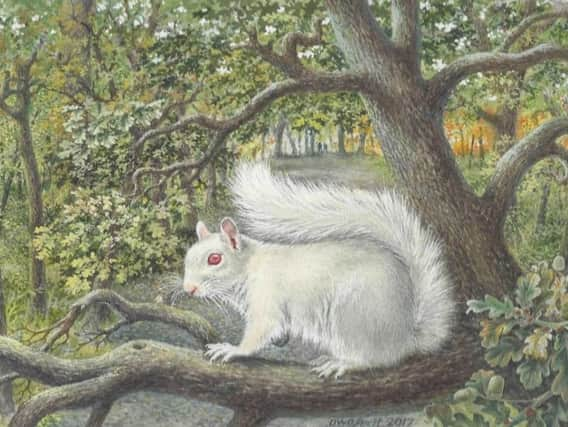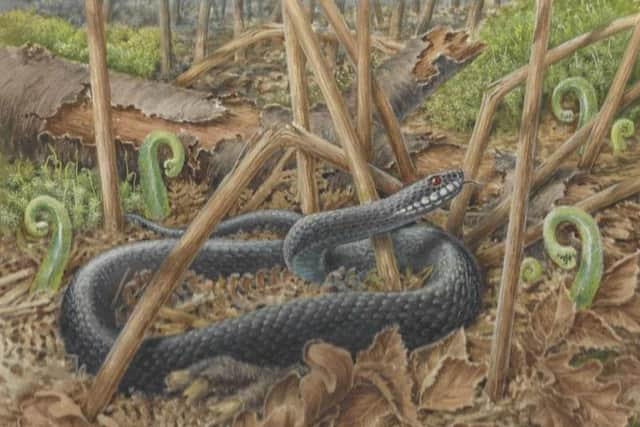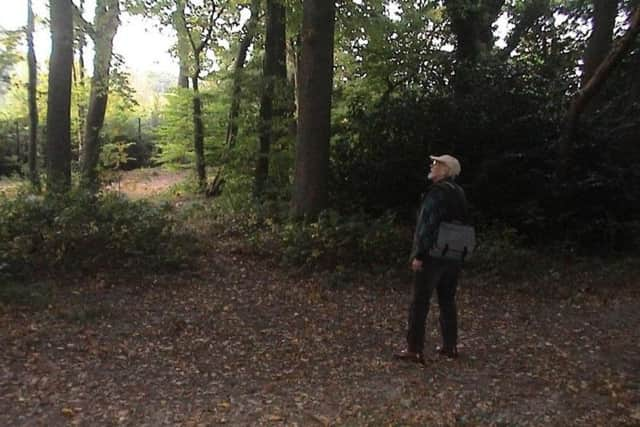Remembering '˜ghost' squirrels of Goffs Park


During the 1970s, Goffs Park became noted for sightings of the rare white squirrel, the albino form of the grey squirrel.
These white squirrels, or ‘ghost’ squirrels as they were known to local schoolchildren, appeared once every few years in the park, and became a focus of interest for one of the town’s then budding naturalists, Dr Peter Sutton.
Advertisement
Hide AdAdvertisement
Hide AdPeter said he first remembered hearing about the ghost squirrels when his brother and their friend from over the road rushed through the door of his house in Oatlands and shouted: “We’ve just seen the white squirrel!”


The following day, Peter and a group of friends from Gossops Green Junior School began their search for the fascinating beast.
They searched the park high and low and finally came across the little creature as it made its way along a row of large oak trees that ran alongside a small stream on the pitch and putt golf course.
The discovery was, of course, followed by much jubilation, which changed to wonder as they watched the agile ghost squirrel jump from branch to branch as it made its way towards the old swamp pond on the edge of the St Wilfrid’s School field.
Advertisement
Hide AdAdvertisement
Hide AdIt was some years before Peter heard of a ghost squirrel in Goffs Park again. It was now the late 1980s, and, taking his love of all creatures great and small into adulthood, he had become an avid wildlife photographer.


This time the search for the elusive albino, with its characteristic red eyes, was not such a quick affair – it took weeks to find it instead of one lucky afternoon.
Eventually though, he caught up with the pristine white specimen near what used to be the old paddling pool in the woods near the top lake, and managed to get some photographs.
These photographs, together with information gathered from a visit to Goffs Park, were used by wildlife artist Denys Ovenden, who painted a picture of the iconic ‘ghost’ squirrel.
Advertisement
Hide AdAdvertisement
Hide AdIt has become one of the pictures in a book about the wildlife of the Crawley area which Peter is currently writing.
Denys also undertook a painting for the book of another of Crawley’s fabled animals – this time it was the black adder.
Black adders are a spectacular and rare colour form of the adder and have the honour of being Britain’s only poisonous snake.
Peter said he first heard stories about a black adder being seen on Target Hill in the early 1980s, when he attended Ifield Comprehensive School.
Advertisement
Hide AdAdvertisement
Hide AdThis led to many years of determined searching on Target Hill and in Buchan Park, but only the usual – albeit visually striking – form of the adder, with the characteristic black zig-zag stripe down its back, was to be found.
All that changed in the early 1990s when Peter was walking with fellow Crawley naturalist and wildlife photographer David Browne.
The pair stumbled across what they initially thought was a bicycle inner tube laying among the bracken and grass tussocks.
The ‘inner tube’ then began to move!
“That’s the black adder!” shouted David as the creature started sliding between the dense tussocks.
Advertisement
Hide AdAdvertisement
Hide AdThe specimen was duly photographed and became one of only two black adders Peter and David would see at the site.
With the building of the bypass through Buchan Park, followed by a development of a housing estate that climbed its way to the summit of Target Hill, the colony of adders that once thrived in the scrub and grassland at the top of this well-known vantage point sadly appears to have been lost.
The superb painting by Denys Ovenden will, however, allow us to remember what must surely have been the inspiration for the ancient tales of ‘serpents’ that inhabited St Leonards Forest and its surrounding area.